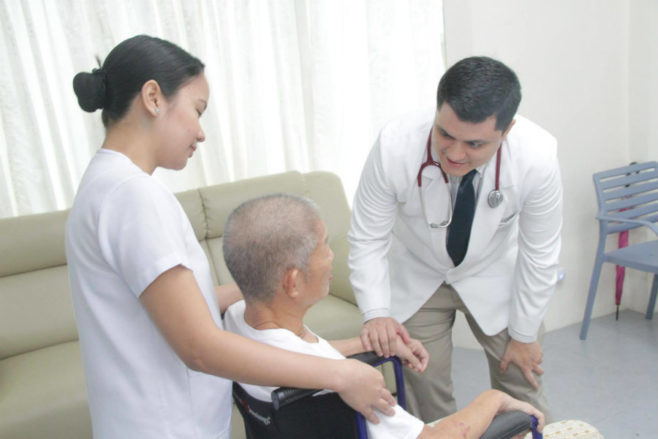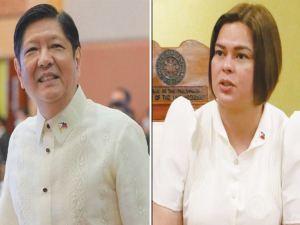 More than a hundred years ago the average life span of a person was around forty five years old. Today, however, people are now enjoying and living life on average of up to seventy years. As the population of the Philippines lives longer are we as a society able to catch up with the needs and requirements of caring for our elderly.
More than a hundred years ago the average life span of a person was around forty five years old. Today, however, people are now enjoying and living life on average of up to seventy years. As the population of the Philippines lives longer are we as a society able to catch up with the needs and requirements of caring for our elderly.
According to the Commission on Population, Filipinos now live longer at sixty seven years for males and seventy two years for females. They comprise the current count of the population of senior citizens in the Philippines at seven million and are expected to rise by ten percent by the year 2025.
Aside from the benefits that they should receive from the Philippine government the senior citizen population is also after the quality of life with their loved ones or care givers. But beyond the numbers and statistics, we face the fact that our body changes as we get older. So how should we take care of our beloved Lolos and Lolas? Is assisted living for the elderly a welcome change in our Filipino culture?
Why is the population of the Philippines living longer? According to Dr. Earleen Seno-Ong, head of the Geriatric Medicine Center at St. Luke’s Global City, maybe it is because of the advances in geriatric care and advanced medical and surgical therapeutics in many hospitals today. It all boils down basically to the quality of care and the medicines that are now available for the elderly people which helps them live longer.
“We are on our way to that stage where we are already preparing for this Filipino geriatric population. We do have an expanded senior citizens law which includes a 20 percent discount. But right now the Department of Health (DOH) and Local Government Units (LGU) will require all government hospitals to have a geriatric ward. We are also in need of more geriatricians to help in taking care of our elderly right now in the Philippines,” said Dr. Seno-Ong.
What is the top concern and what should be focused on when it comes to geriatric care in the Philippines? According to Dr. Seno-Ong the government and private sector should focus more on the transitional care of our elderly, from the hospital to home or hospital to any assisted living or nursing homes. There is also the urgent need of having more geriatric care in the country by training more care givers and family carers. The senior citizens should also have day care activities as well for them to socialize. These things are very important for the elderly to fight depression and to address some of the problems of dementia.
Are these places that are more focused on caring for the elderly something that the Filipino people will be able to embrace and accept knowing that our culture is really deep seated on everyone in the family should be at home and the children should be the ones taking care of the elderly?
“Sometimes even if a member of the family is well trained to take care of the elderly there can also be conflict like fighting more often which results in guilt feelings. So it should be or must be somebody, a third person who should be taking care of the elderly,” Dr. Seno-Ong explained.
What is the best approach in dealing with these kinds of situations? Should the elderly person in question be briefed as well that there are places where he or she can socialize and do activities that can be beneficial for him or for her?
“Sometimes there will be resentment first from the elderly because they don’t want to be placed in a nursing home or a place of assisted living. They want and expect their family members to take good care of them. So what we need to do is to teach their family carers or family members about the short term and long term care plans once the elderly person goes home,” said Dr. Seno-Ong.
Does the elderly person in particular have to stay in these nursing homes or places of assisted living or do they just spend time there during the day time and go home at the end of the day? “Yes, they are free to go home at the end of the day and to keep them busy the whole day we offer the elderly day care activities like memory games, bingo which is a favorite of the elderly, arts and crafts and mah-jong,” said Dr. Seno-Ong.
Is the care giving industry gaining hold on Filipino families who are tight knit and known for taking care of elderly members at home? What is assisted living and what does it offer to the elderly members of the family?
Golden Groves Assisted Living is basically a facility where you can send your loved ones who require more care than they can receive at home but not requiring care at a hospital setting. So it is kind of in between the two. It is a housing facility designed for people with disabilities or those who require more care and it typically caters to the elderly population. They provide 24-seven care, with things like activities in daily living like getting dressed, taking a bath and remembering to take medicines.
“We do have things in Golden Groves like day care. It is always a good idea to have your loved ones, your Lolo or Lola, to leave the home and not just stay there the whole day watching TV with the same people every day. They need to socialize and mingle with people of their own age group,” explained Dr. Ross Groves, the Medical Director of Golden Groves Assisted Living.
What kind of environment are we bringing Lolo and Lola to this kind of facility at Golden Groves? “In this kind of facility that we have the whole place itself is properly made so that it is easy for the elderly to get around. There are no steps and the place is easily accessible by wheel chair. There are a lot of grab bars all over the place to help minimize the risk of falling. Of course there are nice areas where the elderly can just sit down and enjoy nature like at our gazebo,” said Dr. Groves.
When bringing their elderly to stay at Golden Groves a lot of Filipinos might feel like they are abandoning their Lolo and Lola there. What is it about this kind of thinking or mind set of the Pinoy?
“Definitely this is a concern that a lot of people have for their loved ones, particularly for the elderly. It is ingrained in our tradition and culture that children should take good care of their parents and if they are not in the same house they are abandoning their parents. There are circumstances where it is not possible like if the elderly has a chronic condition they require more care than they can receive at home. For instance if the family is abroad and their loved ones are still here there is no way that they can take care of them and be in another country,” explained Dr. Groves.
Is it difficult to change the Pinoy’s way of thinking when it comes to taking care of the elderly or the cultural way of the Filipino, that it is okay to have someone who is more specialized to take care of their parents or Lolo and Lola?
“Of course the children love their Lolo and Lola, their mother and father so much and it is not a natural thing to leave them with a stranger or someone they don’t know. So that is why I do house calls and sometimes I introduce myself to the entire family so that they get to know who is going to be taking care of Lolo or Lola. Members of the family are always welcome to the facility at any time,” said Dr. Groves.
What are the chronic conditions that might prompt the family to think of having their loved ones stay at the Golden Groves Assisted Living Facility?
“One of the major concerns now of the elderly and aging population of the Philippines is Alzheimer’s disease accompanied with this dementia is that they have these psychological changes and they wander around. So if they don’t have constant care and supervision there is a big chance that they can injure themselves, fall down and even wander around and leave their homes and get lost. So an assisted living facility is a viable option for them,” explained Dr. Groves.
The decision to bring the elderly to an assisted living facility is very well thought out. It is not just all of a sudden one day you decide to leave your aging parents or grandparents at a facility. There is an easing in process that should be followed.
“Generally what happens is that the family concerned expresses interest and we schedule a house visit where I go to their house or they come to our facility and tour the place. Sometimes even if the Lolo or Lola has a problem or are confined at a hospital that is where we have the family meeting,” said Dr. Groves.
Can someone who is interested just bring their Lolo or Lola to the assisted living place and just check it out and see if they like it, see if the environment suites them? “We also offer things like day care. It is like an easing in period and we do a couple of days of day care and see if it is alright for them. The best thing to do is do your own research. You have to find out yourself where you want to bring your loved ones. Understand the kinds of programs they have and get to know the staff there because they will essentially act as an extended family for your loved ones,” explained Dr. Groves.
By Jose K. Lirios








